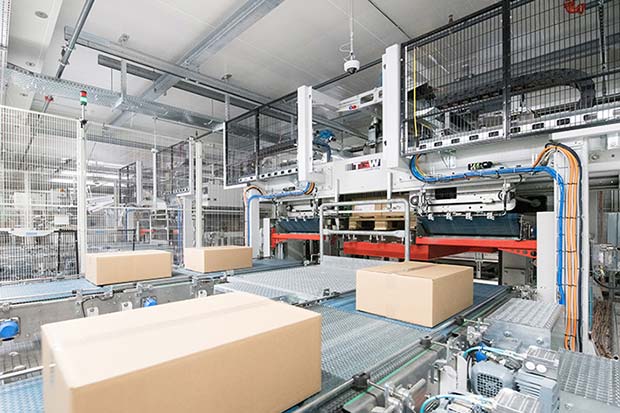There are many things to think about when considering introducing automation or mechanisation to any logistics operation, however 3 things which should not be overlooked are Tomorrow’s Needs, System Requirements and Implementation;
 1) Tomorrow’s Needs
1) Tomorrow’s Needs
Risks around ensuring a flexible supply of reliable labour, increased employment costs, Brexit, and a forecasted rise in order volumes often increases the attractiveness of automation.
But want else should be considered?
There has been a step change in e-fulfilment, with e-commerce retail sales increasing to around a third of all retail sales across the UK.
The impact of not investing may result in customer expectations not being realised and could impact future business. We have seen the rise of e-com operations such as Amazon who offer later cut off and next day or even same day delivery, so future market expectations should be evaluated.
Operationally, consideration should be given to order profiles as this can influence the type of technology and the solution specified. Historical and future data is a prerequisite in designing a solution, however any significant change to order profiles could modify the design. Are the lines per order or SKU range likely to increase?
Similarly, are there any planned changes in the packaging or size of SKU stored? With pressure on companies to reduce the use of plastics, could this impact in the way product is currently stored or shipped? Flexibility is key to providing successful solutions for the longer term. Logistex use both simulation and emulation to illustrate how a solution will perform. Using emulation as part of the design process enables different scenarios to be modelled, increasing confidence that the technology proposed is fit for tomorrow’s needs.
2) Systems Requirement
Systems are often referred to as the ‘Brains’ of a solution. A Warehouse Control System (WCS) is normally a requirement of any automated solution and manages the flow of activity around the warehouse. The WCS will interface with a WMS, which is often modified or replaced to optimise the performance of the equipment specified.
For example, if you are considering an order forwarding system, there may well be a benefit in having both pick to carton and batch pick operations running simultaneously with the solution storing the same SKU in multiple locations to ensure a smoother flow of product around a facility.
If the operation is to run multiple shifts, it is essential to have access to a support 24/7 hotline supported by engineers who understand or are familiar with the system. Many Customers need to adapt quickly to market needs, so ensuring a systems provider can offer an agile approach to enhancements with good accessibility to Systems Architects and Software Developers should not be overlooked.
3) Implementation
Delivering any project on time and to budget is linked to the planning and preparation of both the customer and supplier. Whether a project is a greenfield or live environment, delivering a successful project relies upon having a strong motivated team with a clear and proven approach. Logistex has a high level of experience in implementing projects within greenfield and live environments to which we have seen integrating the Logistex and Customer team significantly reduces risk within the project. Testing of the system also requires planning and preparation, requiring engagement from both supplier and customer, so forming a partnership which includes multiple departments and stakeholders is important.
In view of this, the establishment of Steering Groups helps to ensure both supplier and Customer are ready at Go-Live. Regular communication ensures ahead of Go-Live that everyone is fully prepared, training is completed, and support services are in place enabling the finishing line to be crossed together.




Comments are closed.